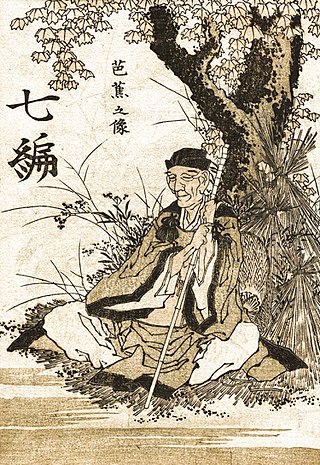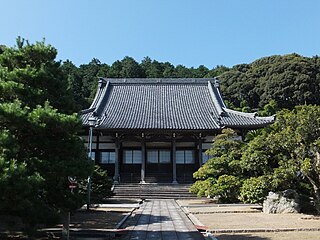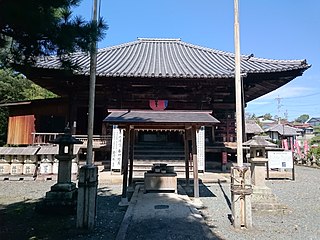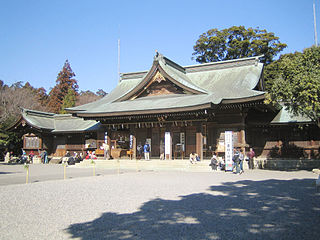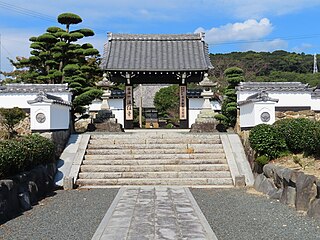9 Sights in Toyokawa, Japan (with Map and Images)
Legend
Welcome to your journey through the most beautiful sights in Toyokawa, Japan! Whether you want to discover the city's historical treasures or experience its modern highlights, you'll find everything your heart desires here. Be inspired by our selection and plan your unforgettable adventure in Toyokawa. Dive into the diversity of this fascinating city and discover everything it has to offer.
1. 松尾芭蕉句碑
Matsuo Bashō ; born Matsuo Kinsaku, later known as Matsuo Chūemon Munefusa was the most famous Japanese poet of the Edo period. During his lifetime, Bashō was recognized for his works in the collaborative haikai no renga form; today, after centuries of commentary, he is recognized as the greatest master of haiku. He is also well known for his travel essays beginning with Records of a Weather-Exposed Skeleton (1684), written after his journey west to Kyoto and Nara. Matsuo Bashō's poetry is internationally renowned, and, in Japan, many of his poems are reproduced on monuments and traditional sites. Although Bashō is famous in the West for his hokku, he himself believed his best work lay in leading and participating in renku. As he himself said, "Many of my followers can write hokku as well as I can. Where I show who I really am is in linking haikai verses."
2. 弘法大師像

Kūkai, born Saeki no Mao, posthumously called Kōbō Daishi , was a Japanese Buddhist monk, calligrapher, and poet who founded the esoteric Shingon school of Buddhism. He travelled to China, where he studied Tangmi under the monk Huiguo. Upon returning to Japan, he founded Shingon—the Japanese branch of Vajrayana Buddhism. With the blessing of several Emperors, Kūkai was able to preach Shingon teachings and found Shingon temples. Like other influential monks, Kūkai oversaw public works and constructions. Mount Kōya was chosen by him as a holy site, and he spent his later years there until his death in 835 C.E.
3. 大恩寺
Daionji Temple is a temple of the Pure Land sect located at the foot of Mt. Mitsuyama, Mitsu Town, Toyokawa City, Aichi Prefecture. The name of the mountain is Mt. Mitsu. The name of the temple is Jodo Shinin. The honzon is Amitabha.
4. 三明寺
Mr./Ms. Temple is a temple of the Soto sect located in Namodori, Toyokawa Town, Toyokawa City, Aichi Prefecture, Japan. It is known by the common name of Toyokawa Benzaiten. The official name is "Ryuunzan Myoonkaku Sanmyozenji". The honzon is a thousand-handed Kannon.
5. 砥鹿神社
Toga Shrine is a Shinto shrine in the city of Toyokawa in eastern Aichi Prefecture, Japan. It is the ichinomiya of former Mikawa Province. The main festival of the shrine is held annually from May 3 to May 5. Located on the borderland of Aichi with Shizuoka Prefecture, the summit of Mount Hongū 782 metres (2,566 ft) is a sacred mountain considered to be within the precincts of the shrine, and has a subsidiary chapel.
6. 正法寺
Shoboji Temple is a temple of the Shin Buddhist Otani sect located in the west back of Akasaka Town, Toyokawa City, Aichi Prefecture. The name of the mountain is Mt. Taishi. The name of the temple is Kamimiya-in. The honzon is Amitabha.
7. 杉森八幡社
Sugimori Hachimansha is a shrine located in Akasaka, Toyokawa City, Aichi Prefecture, Japan. The deities of the festival are Amaterasu, Honoda Besson (Emperor Ōjin), Ōtaka (Emperor Hitoku), and Sonagashi Hime (Empress Jinko).
8. 浄泉寺
Josenji Temple is a temple of the Nishiyama Fukakusa sect of the Jodo sect located in Akasaka-cho, Toyokawa City, Aichi Prefecture. The name of the mountain is Yuqing Mountain. The name of the hospital is Io-in. The honzon is Amitabha.
9. 法住寺
Hojuji Temple is a small temple of the Soto sect located in Toyokawa City, Aichi Prefecture. The name of the mountain is Wuhai Mountain. In 1508 (Eisho 5), it became the founding of a vassal of Ashikaga Yoshisumi. The thousand-handed statue of Kannon Bodhisattva in the collection is designated as an important cultural property. It is said to have been created at the end of the Fujiwara period, and was thrown into the sea during the Meiji era's abolition of Buddhism, and washed ashore on the beach near the temple.
Share
Disclaimer Please be aware of your surroundings and do not enter private property. We are not liable for any damages that occur during the tours.
